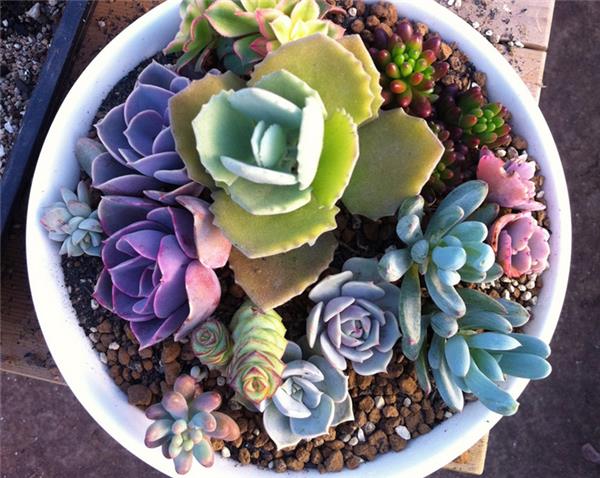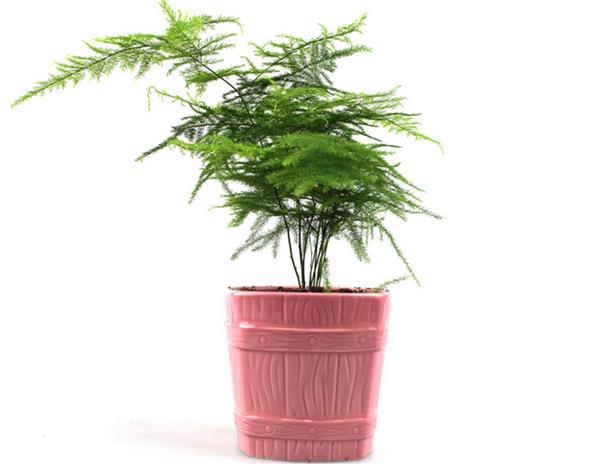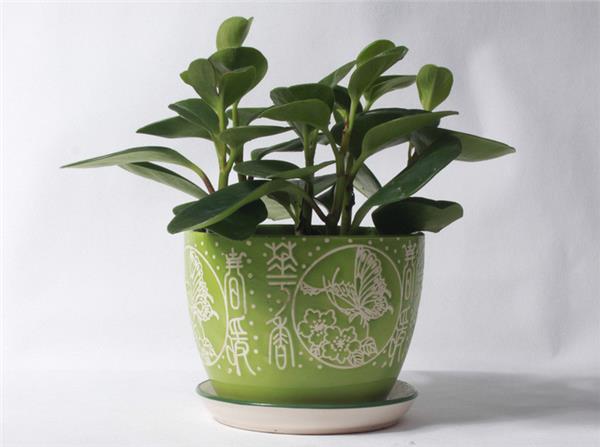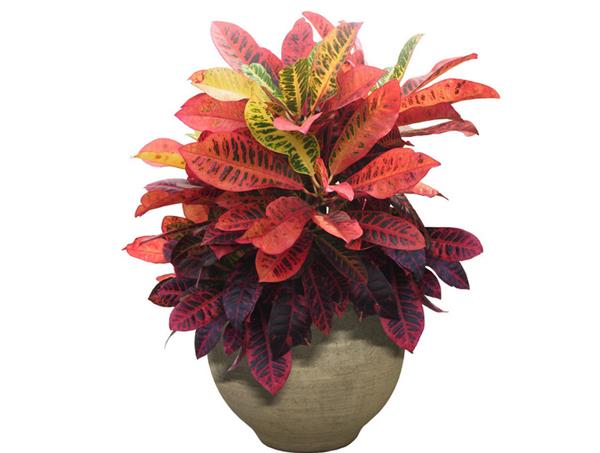How to raise potted flowers
How to raise potted flowers? How do you water potted flowers? Next, let's give you a brief introduction.

How to raise potted flowers
Potted flowers should not be watered too much: because potted flowers are placed indoors in a cool or slightly sunny position, too much watering of potted flowers will make the pot soil waterlogged and cause the roots of potted flowers to suffocate and rot, and the leaves yellow and fall off. Therefore, the watering of indoor potted flowers should adhere to the principle of "see dry and wet, water thoroughly", and do not water sporadically or too much. Water the flowers with water from boiled vegetables or from containers that have been washed with fish, which will nourish the plants and help them grow.
Potted flowers should not be fertilized too much or insufficient: long-term non-fertilization or insufficient fertilization of potted flowers will cause the phenomenon of leaf yellow; too much fertilization, potted flowers can not absorb the root system burn, can not absorb water will also lead to leaf yellow withering. Usually indoor potted flowers choose to apply thin fertilizer at the end of spring and every other week in summer and autumn. If you apply too much fertilizer, you can dilute and wash away some of the fertilizer in the soil through more watering. Lack of fertilizer can lead to potted soil hardening, potted flowers yellow leaves, slender and tender branches. Fertilization should be applied immediately at this time, and the effect can be achieved within a week.

Potted flowers should not have too much light or not enough light: depending on the growth characteristics of potted flowers, the light should not be too much or not enough. Some potted flowers that like sunshine, such as pomegranate, rhododendron and rose, will be placed in places where the light is too weak for a long time, which will cause the plants to gradually weaken, the leaves are thin and yellow, and they do not bloom or bloom less.
Prevention and control of diseases and insect pests of potted flowers: the main diseases and insect pests of indoor potted flowers are aphids, red spiders and leaf spot caused by fungi and other viruses. Its harmfulness lies in that it is easy to make the leaves of potted flowers locally necrotic or withered, even the whole plant yellowing. Therefore, indoor potted flowers only in water, fertilizer conservation, as well as light management to do more articles, to maintain indoor ventilation, timely spray prevention.
Talk to plants or sing to: some studies have shown that doing so can help them survive, and some plants need to play some specific music. Indian sitar music works best, followed by classical music. Don't play heavy metal music. In a famous experiment, plants were given loud rock music, and as a result, the plants soon died.

How to water potted flowers
Pay attention to water quality
Salt-free and clean fresh water is the best water quality. Rain Water is generally better for watering potted flowers; tap water should be stored for a certain period of time until chlorine in the water volatilizes before use; well water containing all kinds of impurities is generally unsuitable for use, and the waste water replaced in rice washing water and goldfish tank can also be used to irrigate potted flowers. laundry water containing soap or soap powder and dishwashing water with oil stains cannot be used. For flowers that require acidic soil, such as camellias, rhododendrons, orchids and orchids, more attention should be paid to water quality, otherwise the potted soil will become alkaline and lead to poor plant growth.
Pay attention to the water temperature
Cannot be watered when there is a big difference between soil temperature and water temperature (or room temperature and water temperature). Can choose the appropriate time in the morning and evening, or adjust the water temperature (generally stored in advance in the cylinder mouth hot sun poured cold water, the plant immediately produced "physiological drought", the leaves soon scorched.

Pay attention to watering water
People summed up the watering experience of "nine more than nine less" in pot practice.
① herbs are watered more and woody plants are less watered
② likes to water more flowers in tide and less in drought.
③ leaves are large and soft, but small and waxy ones are less watered.
④ is watered more in the peak growth period and less in the dormant period.
⑤ Zhuo watered more in big pots and less in small pots:
More watering on ⑥ balcony, less watering in courtyard
⑦ watered more in hot days and less in cold days.
⑧ watered more in dry days and less in cloudy days.
⑨ watered more buds and less blossoms.
The so-called how much is compared under the same conditions, in case of drought and dehydration, the branches and leaves wilt, first move to the shade, add less water in the basin, spray a small amount of water on the leaves, wait for the stems and leaves to stand up, and then pour water thoroughly. If you water a lot of water directly, it will hurt the root and defoliation. In case of continuous rainy weather, it is best to move the basin to the shelter under the porch; if there has been stagnant water in the basin for a long time and waterlogging occurs, the plant must be removed, put in a cool and ventilated place, quickly ventilated and emitted moisture, and return to the basin after 5 days of recovery. If it suddenly clears up after a long rain, woody flowers should be placed in a cool and ventilated place for 2 days. If the sun is exposed rashly, the ability of the roots to absorb water becomes worse during this period of time. Although the potted soil is very wet at this time, the phenomenon of dehydration and dryness of branches and leaves (called "waterlogging") will still occur, or even die. If this phenomenon has occurred: the basin should be moved to a cool and ventilated place immediately. Cut off some dry and shrunken branches and stop watering to make them recover slowly.
Pay attention to the time of watering
Watering time should be placed during plant growth activities, but to avoid the hot sun exposure. Therefore, generally winter watering should be after 9-10:00, and summer should be before 8: 00 in the morning and after 5: 00 in the afternoon. Plants in direct sunlight should be watered heavily in the morning, otherwise they will wilt before they last in the afternoon.
If there is a waterlogging in the basin, the plant must be removed, put in a cool and ventilated place, breathed quickly and emit moisture, and then put on the basin after 5 days of recovery. If it suddenly clears up after a long rain, woody flowers should be placed in a cool and ventilated place for 2 days. If the sun is exposed rashly, the ability of the roots to absorb water becomes worse during this period of time. Although the potted soil is very wet at this time, the phenomenon of dehydration and dryness of branches and leaves (called "waterlogging") will still occur, or even die. If this phenomenon has occurred: the basin should be moved to a cool and ventilated place immediately. Cut off some dry and shrunken branches and stop watering to make them recover slowly.
Pay attention to the time of watering
Watering time should be placed during plant growth activities, but to avoid the hot sun exposure. Therefore, generally winter watering should be after 9-10:00, and summer should be before 8: 00 in the morning and after 5: 00 in the afternoon. Plants in direct sunlight should be watered heavily in the morning, otherwise they will wilt before they last in the afternoon.
Related
- Wuhan Hospital Iron Tree Blooming Result Was Instantly Frightened by the Gardener Master
- Which variety of camellia is the most fragrant and best? Which one do you like best?
- What is the small blue coat, the breeding methods and matters needing attention of the succulent plant
- Dormancy time and maintenance management of succulent plants during dormancy
- Minas succulent how to raise, Minas succulent plant pictures
- What are the varieties of winter succulent plants
- How to raise succulent plants in twelve rolls? let's take a look at some experience of breeding twelve rolls.
- Attention should be paid to water control for succulent plants during dormant period (winter and summer)
- Watering experience of twelve rolls of succulent plants
- Techniques for fertilizing succulent plants. An article will let you know how to fertilize succulent plants.



